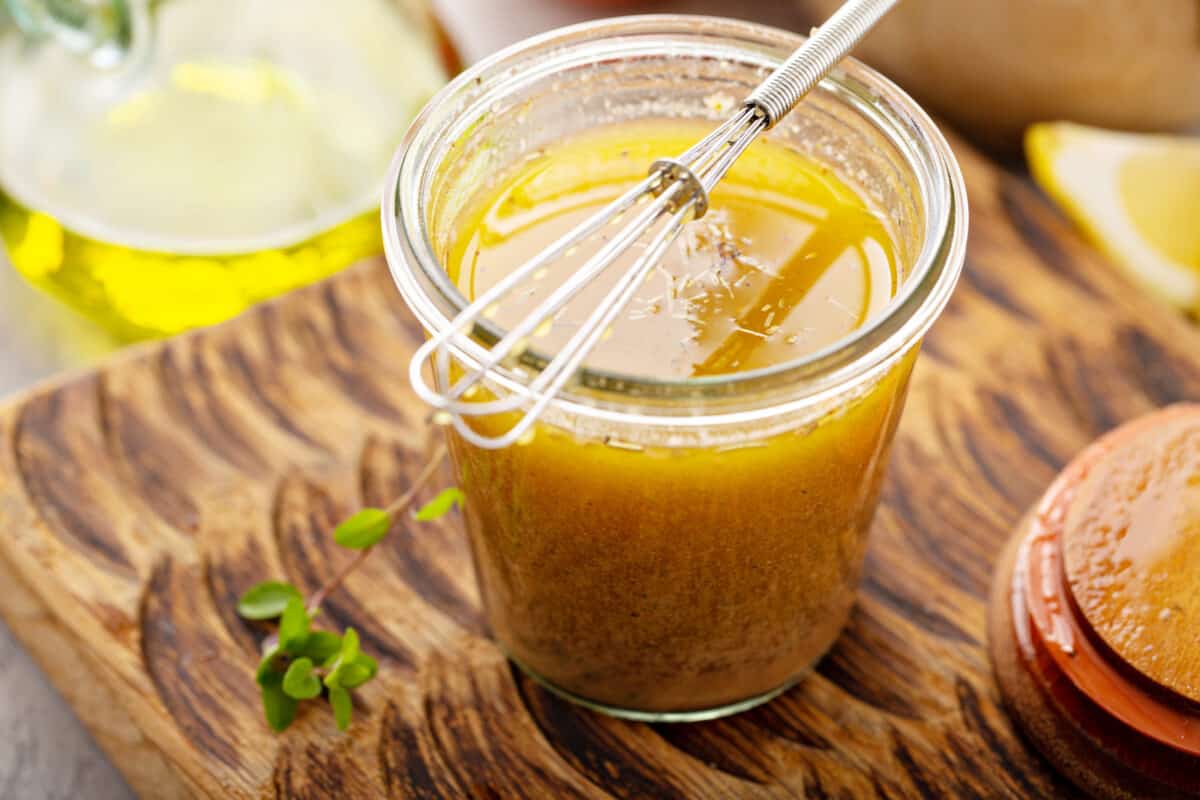A well-made salad is an amazing thing. You picked the perfect leafy base. You added just the right mix of proteins, vegetables and fruits, and toppings like seeds and nuts, for the ideal mix of both texture and flavor. The last thing you want to do with this perfect salad? Smother it in a store-bought salad dressing.

We know — making salad dressing at home can seem somewhat intimidating, as well as a little unnecessary. Does it really make that much of a difference?
Absolutely. Flavor-wise, you can’t go wrong with a fresh, homemade vinaigrette. Getting a vinaigrette right, though, requires the right technique. You can’t just throw some ingredients in a bowl, swirl them around with a spoon, and call it done. Here’s what you need to know.
The Secret to Perfect Vinaigrette? Emulsification
A vinaigrette is, by definition, an emulsified mixture of fat and acid — aka oil and vinegar. Most vinaigrette recipes will call for a ratio of three parts oil to one part vinegar, but you have a little wiggle room here, in case you find that you prefer a different ratio.
Beyond this base, a vinaigrette can be anything you want it to be. Make a sweet vinaigrette with blueberries and honey. Add your favorite herbs for an option like this dill vinaigrette.
So how do you make it all come together perfectly? When you emulsify a fat and an acid, or your oil and vinegar, you’re basically forcing these two liquids that normally don’t mix well, to do just that. You’re forcing them into a combined state. Without the emulsification step, your vinaigrette will be what’s called “broken” — the oil and vinegar aren’t properly mixed.
The good news is that while “emulsifying” sounds fancy, it’s really not. You can properly emulsify your vinaigrette mixture by just using the right tools and the right technique. Rather than just throw all your ingredients into your bowl and attempt to whisk them together, start with acidic ingredients first. Whisk them together, and only then add your oil. Don’t add it all at once, or too quickly. You want to slowly drizzle the oil into the mixture, as you whisk away, bit by bit.
Others swear by techniques such as putting all of your vinaigrette ingredients into an empty jar and shaking them vigorously. Others swear by using an immersion blender, regular blender, or food processor to emulsify your vinaigrette. However, using just a whisk and a gentle touch is far easier and faster, and doesn’t require you to dirty up any special tools or extra dishes.
What if My Vinaigrette Breaks?
Your vinaigrette may break after it’s been sitting around for a while. If so, give it another thorough whisk and then use it promptly.






